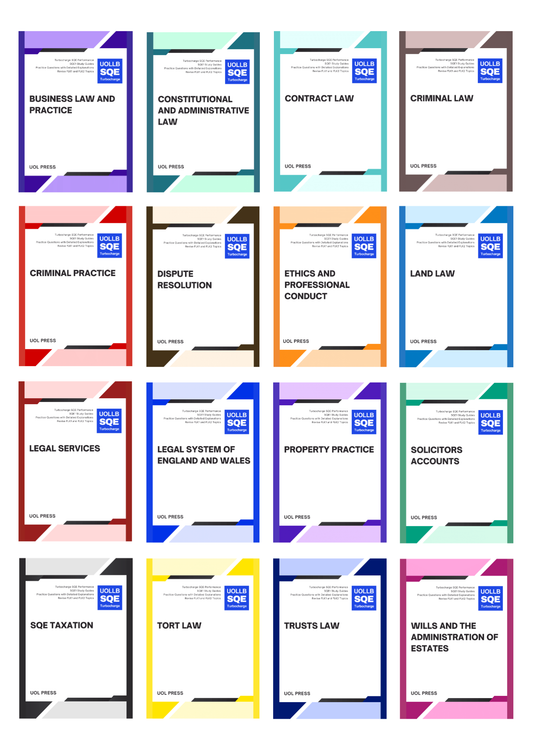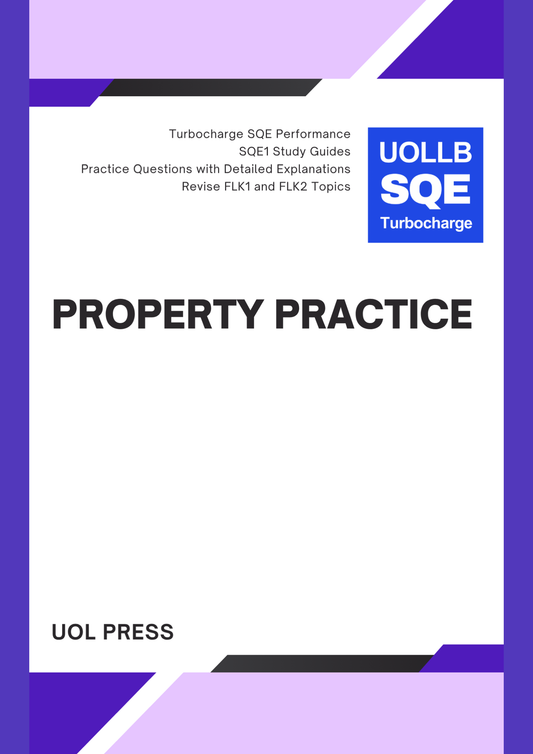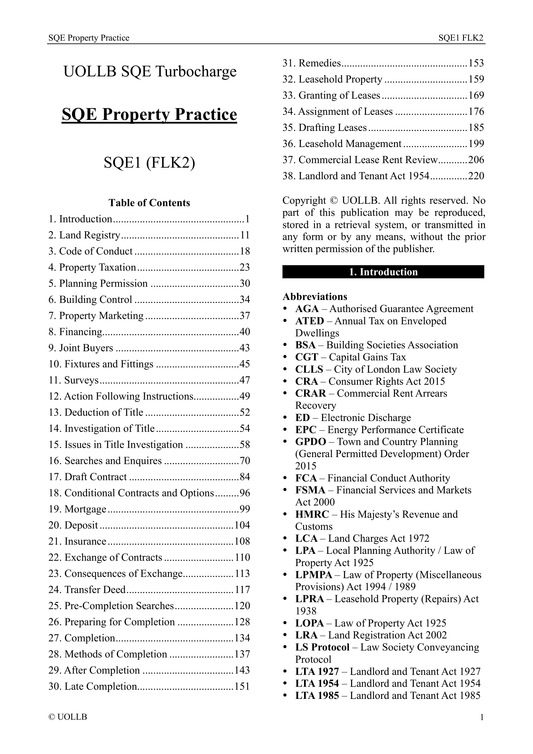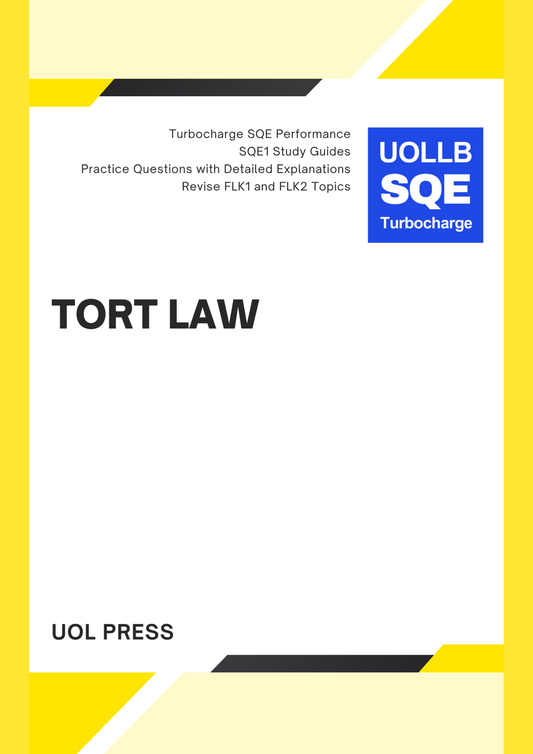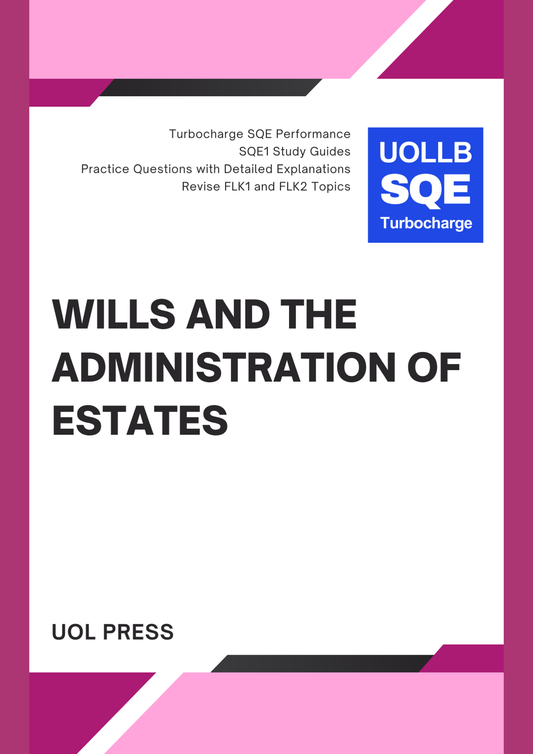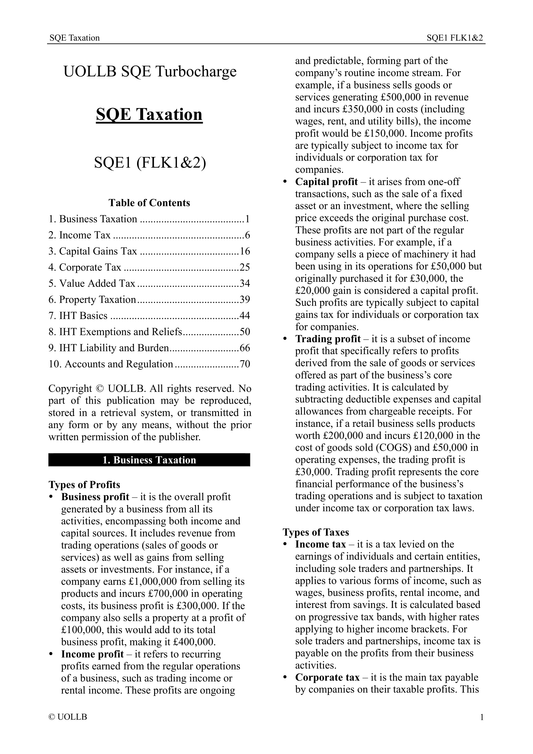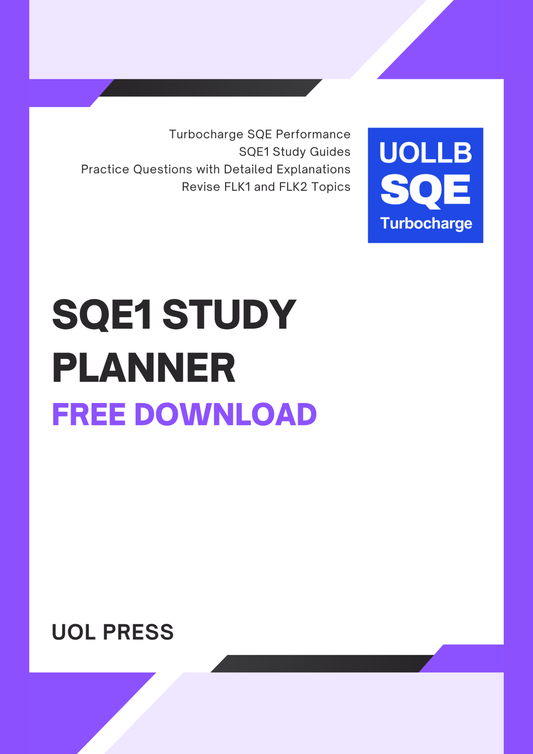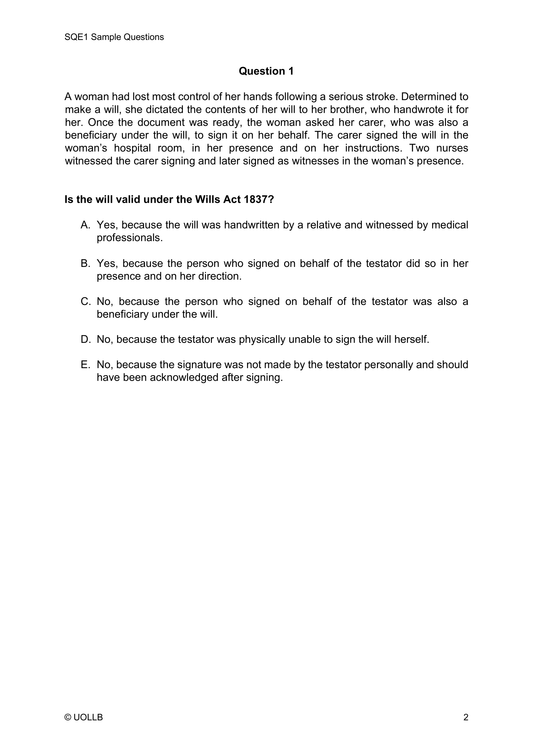SQE2 Standard
Share
The SQE2 Marking and Standard Setting Policy outlines the process for evaluating your performance in the practical legal skills assessment. SQE2 is a single exam consisting of 16 assessment stations, testing a range of legal skills through exercises such as client interviews, advocacy, legal research, and drafting.
Assessment and Marking in SQE2
Each candidate's performance is assessed by trained evaluators to ensure consistency and objectivity. For client interviews, the assessor assumes the role of the client and evaluates the candidate purely on skills, such as communication and client interaction, without considering the application of the law. The attendance note and other exercises are marked by qualified solicitors, taking into account both skills and the application of law. All assessors and markers undergo rigorous training and standardisation to ensure reliability across all evaluations. Moderation further ensures consistency throughout the process.
Marking is based on global professional judgments, rather than a checklist or tick-box approach. The threshold for evaluation is the competency level expected of a 'just competent' Day One solicitor, as defined in the SQE2 Assessment Specification. Assessors are trained to be flexible, recognising that you may approach tasks differently while still demonstrating the required competency.
Marking Criteria
Each type of exercise has specific assessment criteria outlined in the SQE2 Assessment Specification. Performance is judged on a scale from A to F:
Client Interview and Attendance Note
For the client interview and attendance note/legal analysis exercises, the skills score is an average of the interview and attendance note marks. The application of law score is derived solely from the attendance note. The total station score is calculated by giving equal weight to skills and application of law.
Passing SQE2
To pass SQE2, you must achieve an overall score above the pass mark. The borderline regression method is used to set the pass mark. In this method, each examiner provides an overall standard-setting grade (pass, marginal pass, marginal fail, fail) in addition to the numerical marks. These grades are used to determine the cut score for each exercise through regression analysis, ensuring a consistent standard across assessments.
Adjustments for Measurement Error
The cut score is refined by considering the Standard Error of Measurement, a metric accounting for potential assessment inaccuracies. Corrections are applied to ensure that only candidates demonstrating the required competency pass the assessment. The finalised pass mark is rounded to the nearest integer.
Assessment and Marking in SQE2
Each candidate's performance is assessed by trained evaluators to ensure consistency and objectivity. For client interviews, the assessor assumes the role of the client and evaluates the candidate purely on skills, such as communication and client interaction, without considering the application of the law. The attendance note and other exercises are marked by qualified solicitors, taking into account both skills and the application of law. All assessors and markers undergo rigorous training and standardisation to ensure reliability across all evaluations. Moderation further ensures consistency throughout the process.
Marking is based on global professional judgments, rather than a checklist or tick-box approach. The threshold for evaluation is the competency level expected of a 'just competent' Day One solicitor, as defined in the SQE2 Assessment Specification. Assessors are trained to be flexible, recognising that you may approach tasks differently while still demonstrating the required competency.
Marking Criteria
Each type of exercise has specific assessment criteria outlined in the SQE2 Assessment Specification. Performance is judged on a scale from A to F:
- A (5 marks): Superior performance, well above competency requirements.
- B (4 marks): Clearly satisfactory, meets competency requirements.
- C (3 marks): Marginal pass, just meets competency requirements.
- D (2 marks): Marginal fail, just below competency requirements.
- E (1 mark): Clearly unsatisfactory, fails to meet competency requirements.
- F (0 marks): Poor performance, significantly below competency requirements.
Client Interview and Attendance Note
For the client interview and attendance note/legal analysis exercises, the skills score is an average of the interview and attendance note marks. The application of law score is derived solely from the attendance note. The total station score is calculated by giving equal weight to skills and application of law.
Passing SQE2
To pass SQE2, you must achieve an overall score above the pass mark. The borderline regression method is used to set the pass mark. In this method, each examiner provides an overall standard-setting grade (pass, marginal pass, marginal fail, fail) in addition to the numerical marks. These grades are used to determine the cut score for each exercise through regression analysis, ensuring a consistent standard across assessments.
Adjustments for Measurement Error
The cut score is refined by considering the Standard Error of Measurement, a metric accounting for potential assessment inaccuracies. Corrections are applied to ensure that only candidates demonstrating the required competency pass the assessment. The finalised pass mark is rounded to the nearest integer.

